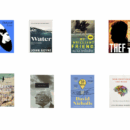The future will belong to those who can humanize as they digitize

You will stay meaningful in the near future of business if you can do this: Humanize + Digitize.
The “digitize” part should be obvious to all, especially after a pandemic that sent everyone hurtling into a low-touch world. Online transactions and digital experiences have boomed as never before. In most sectors we have no choice now: if we don’t offer online options to our customers and ecosystems, we offer nothing at all. Most people are now heavily accustomed to a tap-tap-swipe world of high convenience and low friction.
And yet. The real winners will not just go hell-for-leather on automation and virtualization. They will simultaneously deepen the human part of their business – the high-touch, intensely in-person part of what they offer.
Take banking, for example. Yep, it’s all about mobile apps, online transactions and contactless payments. If you’re not in that game right now you’re in no game at all. But that’s the contest every single bank in the world is in. Just offering quick, smooth, anytime-anywhere banking will not win you any prizes other than that of the also-ran.
Playing for the top trophies means that you have to stand out from the crowd. And guess what, that will boil down to what it always has in banking: having a trusted relationship. Customers value speed and convenience hugely, no doubt; but they also want to know a few old-fashioned human things about you if you are their chosen banking partner: that you have their backs; that you care about their success; that you can be counted on to look after their savings and offer appropriate products at different times in their lives.
Trusted relationships come from positive experiences. Some modern digital-first challengers may pull this off for young, device-centred customers in a purely virtual environment; most big players, however, will need to offer the best of both for quite a while yet. No one is going to go to a bank branch in the near future just to complete a standard transaction; but a lot of people are going to go there for advice, reassurance and elucidation.
And that means humans. Very friendly, very knowledgeable, very sensitive humans. Well-trained, enthusiastic humans.
Another example: retail. Many of those who once said they would never buy anything online have now ordered groceries, medicines, dinners and clothes online. By and large, the stuff arrived intact, and it was quick, and all told, cheaper than trudging out in person. That habit will stick.
Equally, some things are better bought in a pleasant, high-touch environment where merchandise can be felt and tried and discussed. With, you guessed it, humans. Helpful, available, empathetic humans.
You get the drift. Education will need to transition to digital delivery; but will also need teachers with great zest for their subjects and their students. Healthcare will be transformed by telemedicine and artificial intelligence, but nothing replaces sympathy and solicitude when people are unwell.
We are all going to be doing digital. We are also going to be doing human. One does not displace the other. Circuits and switches will work in tandem with flesh and feelings . And remember, to design and deliver excellent digital experiences, what will you need? Ah, you’re bang on point now. Humans. Intelligent, discerning, galvanized humans.
The true challenge for most organizations is not the digitize part; it is the humanize part. Digital acceleration can be procured and installed. Knowing how to deploy human beings properly, however, is something most corporations have always failed miserably at. Instead of seeing humans as beings, they have only seen them as resources: to be deployed, exploited, depleted and ultimately discarded. If anything, when provided with actual robots to work with, most leadership teams are going to get even worse at managing humans.
However, I expect some new super-charged companies to excel on both fronts. They will provide dramatically better speed and convenience; they will simultaneously inspire a cadre of humans to design what’s digital, but also what’s more human. They will humanize as they digitize.
Those are the two prongs of everyone’s strategy now. Use the new digital tools and platforms to make everything easier for your customers and workforces. And go really deep on employee selection and skills, on cultures and relationships. Devices, but also desires. Connectivity, but also compassion. Interfaces, but also inspirations.
For most leaders it’s binary, unfortunately. They can either focus on efficiencies and accelerations; or on communities and emotions. They can either excel at iron-clad legal contracts, or design intuitive psychological contracts. The one who can do both is going to win, big-time. I hope that’s you.
(Sunday Nation, 9 May 2021)

Buy Sunny Bindra's new book
The X in CX
here »
Popular Posts
- My books of the yearDecember 14, 2025
- Here’s why you should become foolishNovember 30, 2025
- Confessions of an explaining personDecember 7, 2025
- How to listen, really listenNovember 16, 2025
- Is AI hiring your company into oblivion?November 23, 2025















